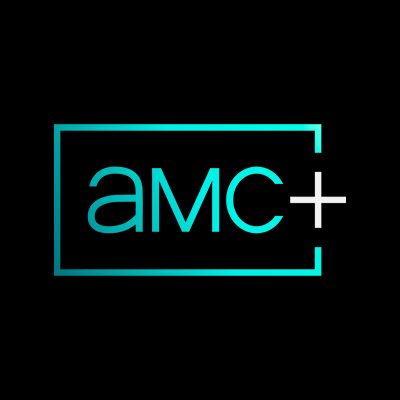Terrifier and its subsequent sequels could have firmly established Art the Clown as a contemporary horror icon, however manner earlier than this, his origins are explored in a a lot smaller and extra refined place. Earlier than Artwork turned the poster boy for brutal gore and shock worth in Terrifier 2 and Terrifier 3, he appeared in All Hallows’ Eve, an anthology movie that started to introduce him as a terrifying, silent killer. One of many sequels to the anthology movie, All Hallows’ Eve: Trickster, made a daring transfer by making Artwork’s character take a drastic flip, providing one thing a lot deeper for the slasher by elevating Artwork right into a cosmic drive — an historical, malevolent being past understanding. Regardless of being key in exploring Artwork’s deeper mythos, the All Hallows’ Eve sequels have flown comparatively beneath the radar — however the movies, Trickster specifically, are nicely overdue for recognition for profoundly reimagining Artwork, his place within the universe, and the fear he can present. Whereas Terrifier 4 is ready to pull back the curtain on Art’s origin in full in accordance with director Damien Leone, Trickster supplies audiences with one of the best proof for a solution within the meantime.
A Fast Look Again at All Hallows’ Eve
To totally respect the shift that Trickster represents for the franchise, it helps to revisit the franchise in full. All Hallows’ Eve was the first full-length feature film where Art the Clown was at the center, introducing him as a grotesque determine by a collection of brief movies contained on a VHS tape. The uncooked and unsettling footage was a promising begin for the brand new slasher, which was continued in All Hallows’ Eve 2 in the same vein, offering extra of Artwork’s sadistic antics whereas sticking to the tried-and-true slasher system. Whereas each movies are efficient in delivering the fear they try, they do not dive too deeply into whom — or what — Artwork actually is, and why he’s lifeless set on unchecked sadism.
Then Trickster launched, breaking free from the mildew solely. Fairly than focusing solely on Artwork’s bloodshed, Trickster recontextualized him with a broader, cosmic framework, suggesting that Artwork is not just a few random clown who enjoys killing, and tying him to something more ancient and inherently evil. Within the movie, Artwork’s appearances developed from pure and easy brutal acts of violence into manifestations of a deeper, otherwordly malevolence. The anthology construction hyperlinks Artwork’s presence to one thing past the bodily world by making him appear omnipresent. Fairly than simply tormenting folks for leisure, Artwork turns into a symptom of a lot bigger forces within the universe.
Artwork the Clown as a Cosmic Entity
The concept that Artwork is a manifestation of a cosmic horror is as unsettling because the acts he carries out. As a substitute of being a random killer in a clown go well with, Artwork is portrayed as an avatar of a a lot darker, metaphysical drive — presumably a demon, as was additional hinted at in Terrifier 3, or presumably one thing a lot worse akin to a monster pulled from an H.P. Lovecraft story. In a single section, a personality stumbles upon an historical e book shrouded in thriller that means Artwork’s presence predates the fashionable period and is related to darkish rituals and forgotten myths, indicating that he has existed in varied varieties all through historical past. The shift redefines your complete Terrifier universe with the implication that Artwork’s violence is existential quite than purely bodily. It’s not nearly shock and gore — it’s concerning the dread of what Artwork represents: a drive past human comprehension, one which has all the time been there, lurking on the fringe of actuality, and can proceed to be there so long as there are souls to torment.
Because of this, Trickster is essential to understanding Artwork’s true nature. It is the movie that transforms him from a slasher villain to one thing way more complicated. By framing Artwork as a cosmic entity, Trickster shifts the main focus from his sadistic actions to the sheer horror of his existence — a harbinger of doom, an incarnation of an ancient evil that exists exterior the time and area his victims are tied to. For followers of Terrifier and of Artwork particularly, Trickster supplies a essential layer to the general mythology. Whereas the Terrifier movies concentrate on the appalling gore of Artwork’s actions, Trickster suggests that there is one thing far darker current than what the viewers is given to explicitly see on-screen. By indicating that Artwork is a part of one thing a lot bigger and extra terrifying versus a lone determine in Trickster, your complete universe is elevated right into a broader mythology, opening up extra alternatives for worry — a worry of the unknown, of ancient forces lurking in the shadows ready for the best second to disclose themselves.
It is easy to miss All Hallows’ Eve and its sequels in favor of the three mainline entries, however the anthology movies are nicely well worth the watch. They don’t seem to be as gory or as visceral as the later films in the franchise, however that is what makes them so essential to the franchise general. The shift in Artwork’s character from a slasher to an ominous, cosmic entity whose violence is simply the floor of the true horrors at play reframes the franchise, and Artwork’s position in it, solely, pushing to embed the slasher style with the paranormal. Ultimately, Trickster is extra than simply one other horror film or entry into the Terrifier universe — it’s a redefinition of Artwork the Clown. It’s the movie that turns him from a mere killer right into a cosmic drive, and that’s a change price recognizing.

- Launch Date
-
October 29, 2013
- Runtime
-
82 Minutes
- Director
-
Damien Leone
-

-

Catherine A. Callahan
Caroline
-

Marie Maser
Costume Designer
-



